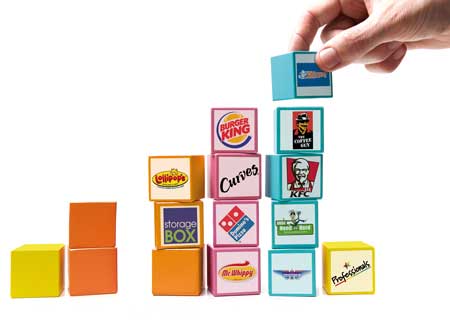Crossing the digital divide
A quiet evolution has taken place in document management. Smart electronic systems and processes are now realising significant productivity and efficiency gains. Glenn Baker reports on the latest thinking in document management and print management.
| A quiet evolution has taken place in document management. Smart electronic systems and processes are now realising significant productivity and efficiency gains. Glenn Baker reports on the latest thinking in document management and print management. I read in a 2003 IDC white paper that documents, whether printed or in electronic format, are to a company what blood is to the human body. They feed the body (company) with the oxygen (information) that enables it to operate. They also provide the life blood of communications with customers, prospects, suppliers and business partners. It’s a fitting analogy. So it makes absolute sense for a business to invest in smarter document management solutions to realise productivity and efficiency gains and save costs. But how do businesses go about achieving this? First there is the whole issue of merging two document workflows – physical paper and digital (electronic) documents – in order to eliminate cost duplication. It would seem that many organisations have started the conversion process only to stumble into paper road blocks, according to Rod Vickers, solutions product manager at Fuji Xerox New Zealand. He says some firms have purchased Electronic Document Management Systems (EDMS) software for managing documents in a digital format and for distribution and storage, but have failed to maximise the full benefits even three or four years down the track. Now, with budgets pegged back companies are looking to increase the return on their investment. Vickers reserves judgement on whether EDMS technology will ever completely tame the proverbial ‘paper mountain’, but sees many benefits in electronic document storage. “For a start, documents are all kept in a central repository and can be searched, viewed and output from anywhere in the organisation. “From a legal and regulatory compliance perspective, businesses can now have their archives in less expensive off-site storage, while having full access to all company information via the EDMS. And that has a direct impact on return on EDMS investment.” Greg Twiname, channel manager, software for Konica Minolta Business Solutions NZ, agrees that the use of EDMS is clearly on the rise and by businesses large and small that want to improve their document management processes and reduce costs. “In spite of this awareness, the handling of documents is an area that is still handled in a very mixed manner. Some Councils and Government departments have made progress with formal EDM systems but most organisations utilise various approaches to retaining and managing documents,” says Twiname. “Most documents are still being held in informal or semi formal Window file ‘structures’ with only limited organisational agreement on the structure, the filing methodology and Metadata elements.” [Metadata is essentially data about other data.] A significant issue remains with the retention and disposal of documents, he adds. “We still see a very high level of duplication, where the same document is being stored many times in various directories. There is little or no control over document disposal processes and documents being either retained unnecessarily or deleted when still required.” The size and scope of the potential cost savings associated with EDMS software can be highlighted by large enterprise and government agencies requiring documents to be signed, says Rod Vickers. By the time a document is created, couriered, actioned, processed and returned, the turnaround can involve three or four days. No matter how hard you attempt to convert paper forms and their manual sorting processes into automated, electronic workflows, there always seems to be that paper element as it either enters or exits your business. Vickers answer? “Smart Connect 2.0 from Fuji Xerox is a New Zealand developed software that lets you scan in a document and provide workflow instructions at point of entry (MFD), that push the document through your entire network – enabling the process described previously to happen in a matter of minutes rather than days, and with all the associated savings such as transportation, and benefits such as quick access.” The paper mountain Converting paper documents to digital format inevitably does have an impact on the aforementioned paper mountain. But such a strategy needs to be backed up with a concerted effort to reduce print waste. Vickers says one recent study determined that a typical document can be reproduced up to 11 times within an organisation, and a large percentage of printed documents are never collected from the print device as employees get side-tracked for whatever reason. “Walk around your office late on a Friday afternoon and see how many documents are left in the output tray!” A ‘Follow-You-Print’ solution from Fuji Xerox overcomes this by making employees walk up and authenticate (identify themselves) at the print device before the document is released for print. An additional benefit from this type of solution is greater information security. And you might just be able to reduce those two paper recycling bins down to one, and save on storage space. Konica Minolta’s Twiname is currently assisting one client to implement an EDMS system in order to reclaim three large rooms full of paper documents. “Most organisations keep documents too long because they are unable to easily identify documents that are ready for disposal. They continue to store these unnecessarily. EDMS solutions are excellent in identifying those documents ready for disposal or archiving,” he says. It’s also the norm to find multiple copies of a document in an organisation he says, rather than one central copy. “The lack of access with paper based systems often results in copies been distributed around the organisation – and these are then filed again, increasing storage requirements.” But there are also device functions that can assist in reducing the amount of paper printed he says. “Automatic double-sided printing, PIN release and process improvements such as fax-to-email can eliminate wasteful usage of paper.” Let’s not forget the sustainability issues surrounding document management either. It has been estimated that individual US office workers can consume as much as 1.2 trees a year through paper usage (www.printgreener.com). Obviously at the heart of any sustainable document process is the need to reduce print volumes, says Twiname. “The electronic transmission of invoices and statements in PDF format rather than posting a hard copy is one example of how to do this. Our work just with one large client has seen an 80 percent reduction of print volumes from 32,000 printed pages per month to just 6000. “The improved accessibility of an EDMS system means documents can be retrieved 24/7, and by staff working in the field. This reduces the tendency to print out hard copies to support activities outside the office,” says Twiname. Compare the time spent locating a document in a central electronic repository compared to a staff member searching for a physical document, and it’s easy to see why EDMS is catching on. |
Moving forward |



